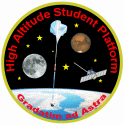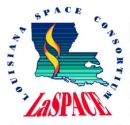



Payload 01 Information
Payload Flight Number:
Institution:
Payload Title:
Flight test of CITIES supporting hardware on the High Altitude X-Ray/Gamma-Ray Detector Testbed (HAXDT)
Student Leader:
Faculty Advisor:
Payload class:
Small
Payload ID Number:
01
Mass:
Current:
Serial Downlink:
Analog Downlink:
Serial Commands:
Discrete Commands:
Payload Specification & Integration Plan
Due: 06/22/2018
Delivered:
Payload Integration Certification
Scheduled: 07/27/2018
Actual:
Flight Operation Plan
Due: 07/19/2018
Delivered:
Final Flight / Science Report
Due: 12/07/2018
Delivered:
Abstract:
The High Altitude X-Ray/Gamma-Ray Detector Testbed (HAXDT) is a platform used for flight testing prototype sensors, sensing concepts and supporting hardware for CubeSats. HAXDT has a 3U CubeSat form factor and is designed to interface with the High Altitude Student Platform (HASP) adapter plate. It hosts the CsI(Tl) Incident Energy Spectrometer (CITIES); a major redesign from the legacy Gamma Ray Incidence Detector (GRID) flown on HASP in previous years. Developed at the University of Minnesota, CITIES is Gamma-ray and hard X-ray detector optimized for making accurate positioning, navigation, and timing (PNT) measurements, as well as for studying solar weather. On the HASP 2018 flight, HAXDT will be hosting most of the supporting hardware and software that will be implemented on two University-built 3U CubeSats: Experiment for X-ray Characterization and Timing (EXACT) and Signal of Opportunity Ranging and Timing Experiments (SOCRATES).These two missions will host their own versions of CITIES in order to fulfil their science and engineering goals. The HASP 2018 flight will serve as a stepping-stone to validate the current designs for the supporting hardware of both satellites. More specifically, the flight will be used to test the reprograming abilities of the on-board processors through radio communication outside of a lab environment. Likewise, the secondary goal for the flight will be to validate the detector data processing capabilities of the Field Programmable Gate Array (FPGA) implemented after the HASP 2017 flight.
Payload Integration Plan:
|